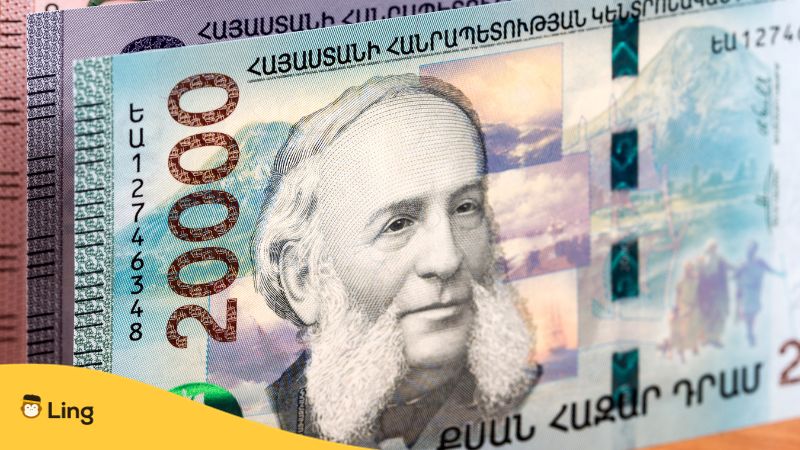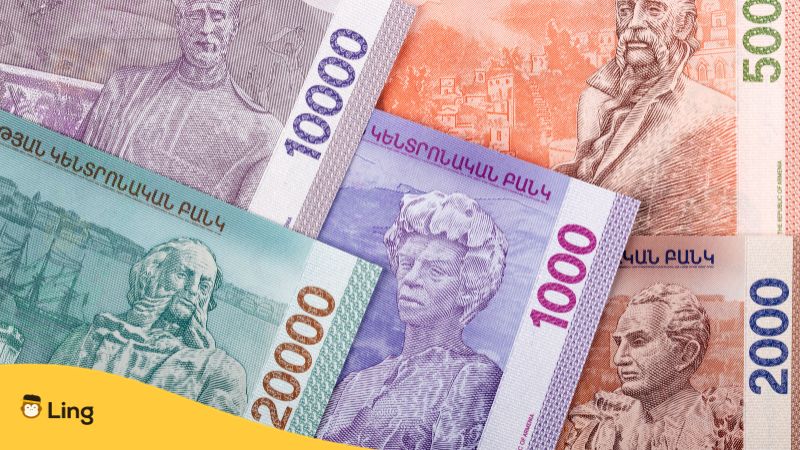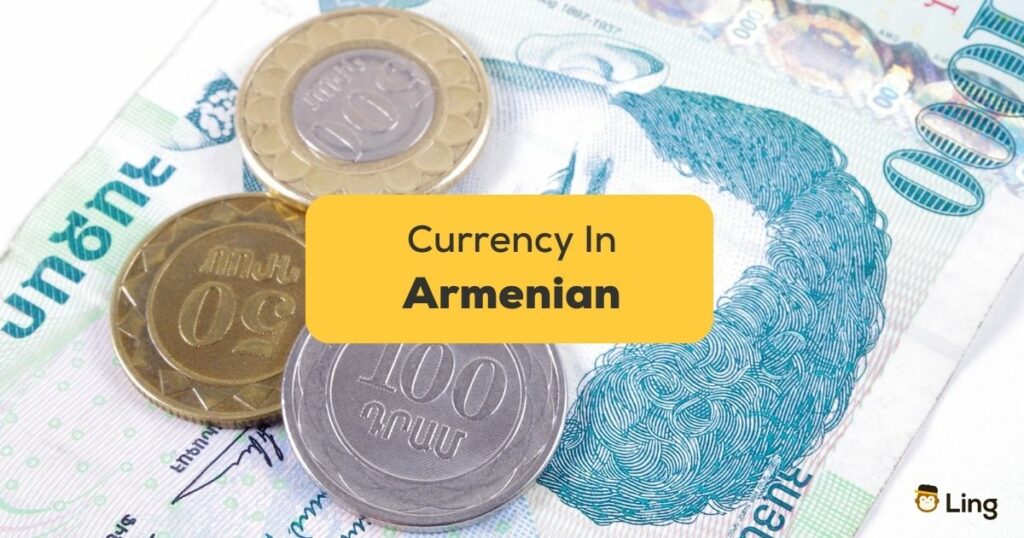Alright, pals, let’s go on a little treasure hunt in our own wallets, shall we? Dig in and pull out a piece of that good ol’ cash. Got it? Now, give it a good look. See those funky swirls, poppin’ colors, and the stone-faced peeps staring back at you? In this post, we’re going over the Armenian currency known as the Dram (Դրամ) and get to know it a little bit better. Because who knows? We might just find ourselves wanting to visit the jaw-dropping tourist spots in Armenia, right? Let’s go!
History Of Armenian Dram
The word ‘dram’ has a kind of grandeur to it, doesn’t it? Like it should be said with a deep, movie-trailer voice. And it has the creds to back it up, tracing its roots all the way back to the ancient Greek ‘drachma.’ That little guy was not just a hefty unit of measure but also a pretty snazzy coin that was all the rage in ancient Greece.
Flash forward a few centuries to the medieval Kingdom of Cilicia, chilling on the northeastern Mediterranean coast. This is where the dram really started to, well, make a name for itself. It’s the 12th century, and King Levon I is ruling the roost. This was the golden age of dram coins, which were basically the rockstars of the medieval Armenian economy.
Now, let’s hit fast forward again to the 20th century. The Soviet Union has just left the building, and Armenia is ready for its close-up. Enter the modern Armenian dram, which made its dazzling debut on November 22, 1993, thanks to the Central Bank of Armenia. Cue the confetti!

Armenian Currency Design And Symbols
Armenian currency is basically a mini museum of the nation’s oh-so-rich history and culture, and it’s got the design chops to prove it. Each note and coin is like its own little storybook, complete with major historical VIPs, super important landmarks, and all sorts of symbols that scream ‘Armenia.’
Whenever I lay my eyes on an Armenian banknote, Mount Ararat is like, ‘Hey, look at me!’ And seriously, it’s pretty darn awe-inspiring. This big ol’ mountain isn’t just a pretty face – it’s a mega symbol of Armenian nationalism and has a starring role in the Catholic faith (shoutout to Noah’s Ark). Slapping Mount Ararat on the money is like a big ol’ nod to Armenia’s biblical roots and its tight-knit bond with its homeland.
But wait, there’s more! The dram is also like a hall of fame for Armenian legends. Take the 50,000 dram note, for example. It’s got Saint Gregory the Illuminator just chilling on it, and this dude was key in making Christianity the go-to religion in Armenia. So, by giving him the spotlight, the currency is giving props to Armenia’s deep religious roots and its claim to fame as the first nation to hop on the Christianity train.
And it doesn’t stop at faces and mountains. The Armenian dram is also throwing up all sorts of symbols that are near and dear to the nation’s heart. Case in point: the 20,000 dram note, which is basically like, ‘Hey, check out the Armenian alphabet.’ It’s a big deal because it’s special to the Armenian language and culture, and basically something Armenians are super proud to call their own.
Armenian Coins
Alright, let’s talk about the stars of the show in Armenia’s monetary lineup: the vibrant banknotes and their sidekicks, the ‘luma’ coins. These coins are important in the Armenian monetary system, with denominations of 10, 20, 50, 100, 200, and 500 luma – each like a mini art piece, flaunting symbols and landmarks that are totally Armenia’s claim to fame.
For starters, the 10 luma coin is basically a shoutout to Armenia’s independence, rocking the emblem of the Republic of Armenia like it’s going out of style. Then we’ve got the 20 luma coin, which is like a high-five to Armenia’s rich literary history, featuring the super cool Armenian alphabet. Don’t even get me started on the 50 luma coin – it’s got the Sardarapat Memorial, which is like a giant fist pump to Armenia’s epic win over the Ottoman Empire in 1918.
The 100, 200, and 500 luma coins are also like the Avengers of Armenian history, each one showcasing a different superhero. There’s the Mother Armenia statue, the Armenian coat of arms, and the Tatev Monastery, all of which are basically giving us a sneak peek into Armenia’s past, present, and future.

Security Features Of Armenian Currency
Okay, let’s chat about the Central Bank of Armenia’s mad skills in the world of money protection. This government institution decked out all sorts of fancy features to their money, like micro text, watermarks, and metallic threads that are basically a counterfeiter’s worst nightmare. They’re printed on this fancy high-quality paper that feels all sorts of special when you touch it. Plus, they’ve got this cool raised print that you can feel and a secret-agent-style security thread that’s only visible when you hold it up to the light. Each note even got inks that glow under UV light to bust those counterfeit notes.
Armenian Words For Money
In the Armenian language, the concept of money is woven into everyday expressions and idioms, reflecting the culture’s values and historical experiences. The table below will delve into various Armenian terms for money, each carrying unique connotations and contexts. These words provide an intriguing window into the nuances of Armenian society, economics, and linguistics.
| English | Armenian Script | Armenian Pronunciation |
|---|---|---|
| ATM | Բանկոմատ | Bankomat |
| Bank | բանկ | Bank |
| Cash | կանխիկ | Kanchik |
| Coin | լումա | Luma |
| Currency | արժույթ | Arzhuht |
| Exchange Rate | Փոխարժեք | Poxarzhek |
| Loan | վարկ | Vardk |
| Money | դրամ | Dram |
| Savings | խնայություն | Khnayut’yun |
| Wallet | պայթեք | Payteq |
Learn Armenian With Ling
To delve further into the fascinating world of the Armenian language, we highly recommend downloading the Ling App. This innovative language learning tool is available on both the App Store and Google Play Store. With the Ling app, you can learn Armenian at your own pace, from beginner to advanced levels. Don’t wait – enhance your linguistic skills and explore Armenian culture in more depth today! Download the Ling app now.



































































